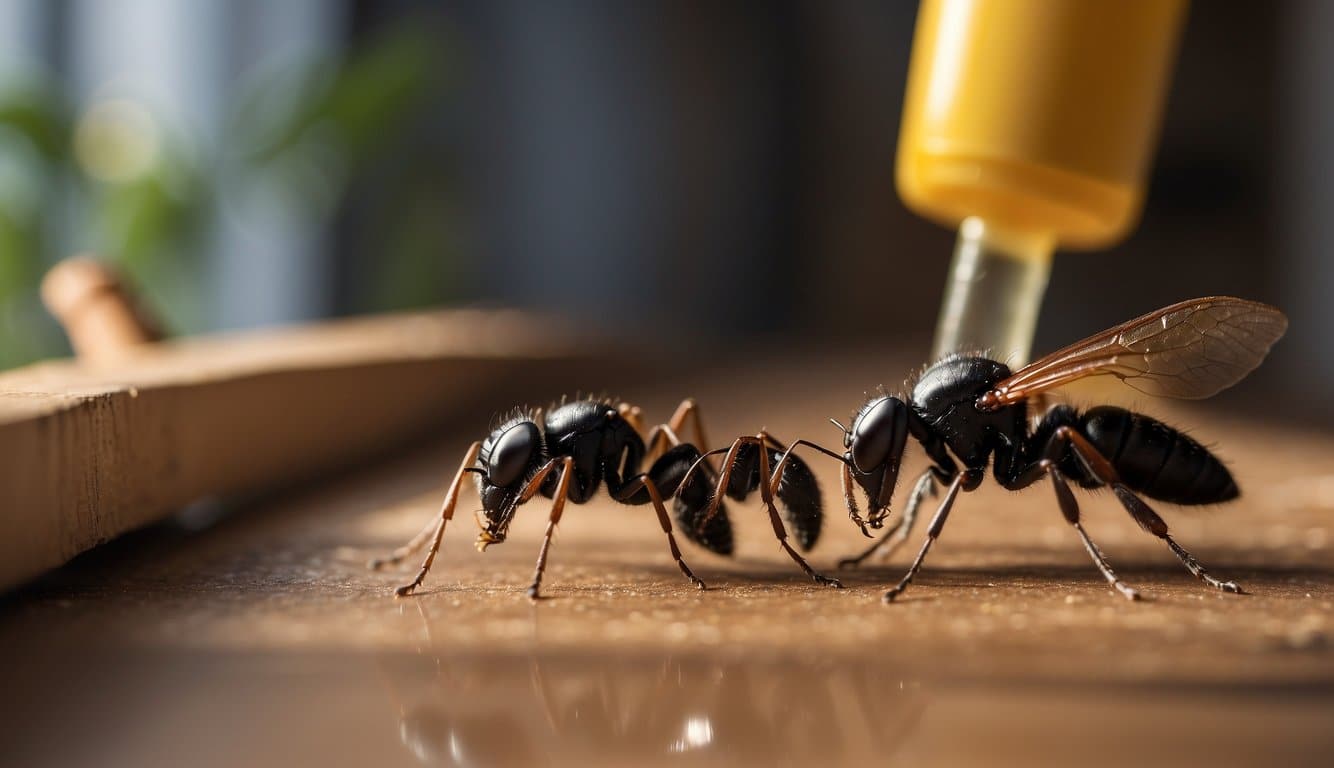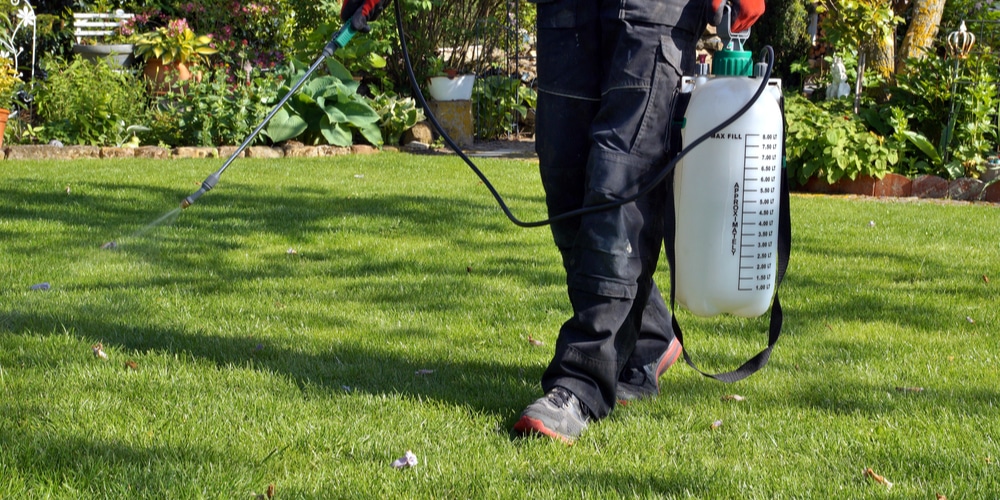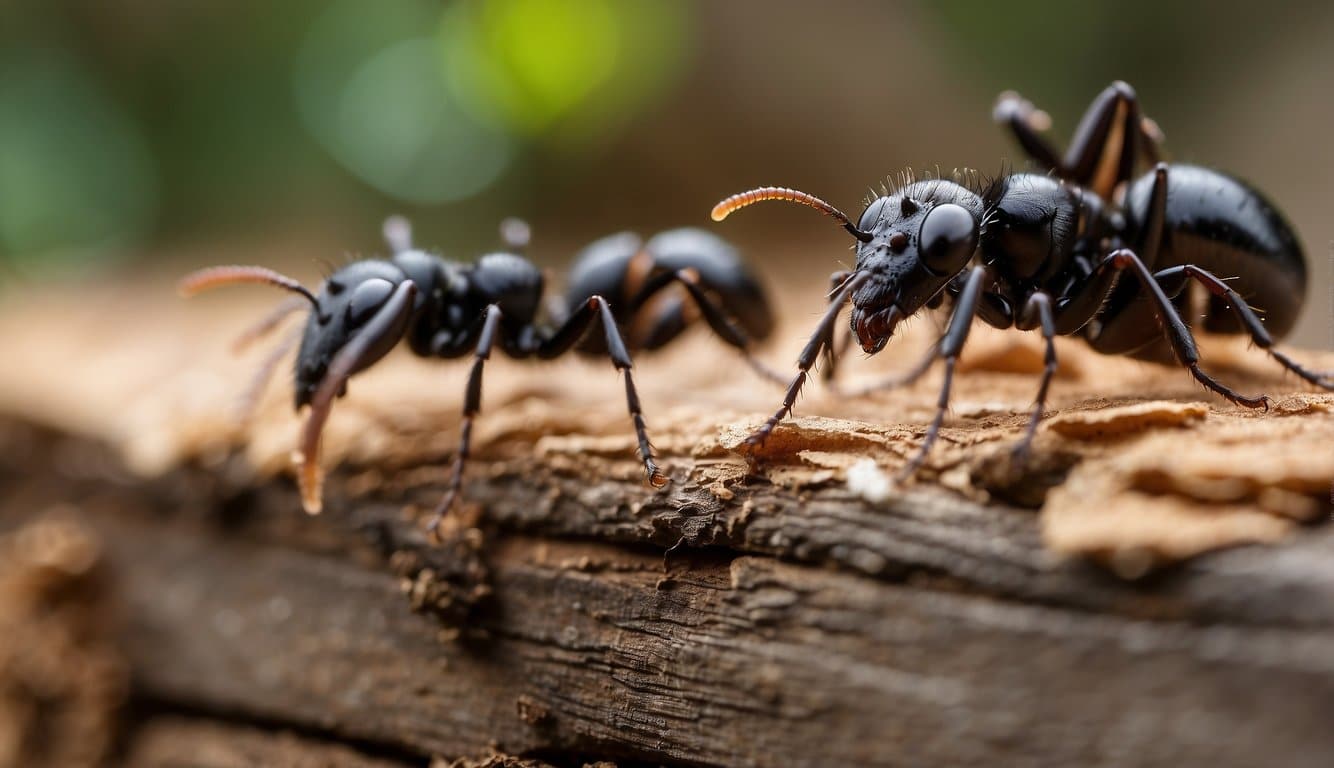Decision Tree for Getting Rid of Carpenter Ants
Let’s tackle the problem one step at a time.

Step 1: Identify the Infestation
- Question: Have you noticed signs of carpenter ants, such as large black ants, sawdust-like material (frass), or rustling noises inside walls?
- Yes: Proceed to Step 2.
- No: Continue regular inspections and maintain preventive measures.
Step 2: Locate the Nest
- Action: Try to locate the source of the infestation.
- Tips for Locating Nests:
- Indoors: Check moist areas, around windows, doors, chimneys, and where plumbing penetrates walls.
- Outdoors: Inspect around porches, foundations, tree stumps, wood piles, and other damp locations.
- Tips for Locating Nests:
Step 3: Remove Food Sources
- Action: Eliminate food sources that attract ants.
- Methods:
- Store Food Properly: Keep food in sealed containers.
- Clean Up: Regularly clean counters, floors, and dispose of garbage promptly.
- Methods:
Step 4: Bait and Poison
- Question: Are you comfortable using baits and poisons?
- Yes: Choose appropriate baiting and poisoning strategies.
- Baits: Use baits that attract ants, which they carry back to the nest.
- Insecticidal Dust: Apply dust in areas where ants are active, such as in voids or along their paths.
- No: Consider natural or professional alternatives.
- Yes: Choose appropriate baiting and poisoning strategies.
Step 5: Non-Chemical Methods
- Question: Prefer non-chemical methods?
- Yes: Implement natural control strategies.
- Boiling Water: Pour boiling water into the nest site if accessible outdoors (use caution).
- Diatomaceous Earth: Sprinkle around areas where ants travel.
- No: Continue with chemical methods.
- Yes: Implement natural control strategies.
Step 6: Repair and Seal Entry Points
- Action: Repair structural damages and seal entry points.
- Methods:
- Seal Cracks: Use caulk to seal cracks and crevices in foundations, around windows, and other entry points.
- Fix Moisture Problems: Repair leaks and ensure good ventilation to reduce moisture.
- Methods:
Step 7: Monitor and Maintain
- Routine Actions:
- Regular Inspections: Check for new signs of ant activity.
- Maintenance: Keep your home clean and free of standing water.
Step 8: Professional Pest Control
- Question: Is the infestation extensive or difficult to control?
- Yes: It might be time to call in professional pest control.
- No: Continue with the current strategies and monitor effectiveness.
Additional Tips
- Regularly Check: Inspect your home regularly for signs of moisture damage and decay, which can attract carpenter ants.
- Natural Repellents: Consider using vinegar or essential oils like peppermint as a deterrent in areas frequented by ants.
Identifying Carpenter Ant Infestations
Before you declare an all-out war on these wood-loving pests, make sure you’re dealing with carpenter ants.
Key indicators include the appearance of worker ants and the discovery of frass.
Spotting the Warning Signs
When suspecting carpenter ants in your living space, keep your eyes peeled for these unmistakable clues:
- Worker Ants:
- Appearance: Large, ranging from 1/4 to 1/2 inch, black to dark brown.
- Activity: Most active at night, you might spot them on a mission for food.
- Frass:
- Definition: Sawdust-like material, which carpenter ants kick out of their galleries.
- Location: Look for small piles near wooden structures or walls.
Learning About Their Habitats
Understanding where carpenter ants call home can help you spot an infestation faster:
- Moist Wood: They prefer damp areas, so check around sinks, bathtubs, poorly sealed windows/door frames, and roof leaks.
- Nests: They don’t eat the wood, but they nest in it. Look for smooth, hollowed-out galleries as evidence of their presence.
Natural Remedies for Ant Control
When you’re battling carpenter ants, don’t think you’re limited to harsh chemicals. Nature’s got your back with solutions that are kind to the environment and tough on ants.
Using Vinegar Solutions
Nothing disrupts an ant’s scent trail like a good spritz of vinegar. Here’s how to whip up a potent ant-repelling spray:
- Mix equal parts white vinegar and water in a spray bottle.
- Add a few drops of lemon juice for extra potency.
- Shake well and target the ants’ frequent paths and entry points.
Applying Diatomaceous Earth
For a gritty approach that ants can’t withstand, use diatomaceous earth (DE). Just remember, you’re looking for food-grade DE to be safe around your home:
- Sprinkle a thin layer of DE around ant entry zones.
- Reapply after rain or cleaning since it loses effectiveness when wet.
Leveraging Essential Oils
Essential oils are like the Swiss Army knife in your natural pest control kit. You’ll want to use peppermint, tea tree, or neem oils:
- Dilute a few drops in water to create a toxic-free spray.
- Dab cotton balls in the solution and place them in ant hotspots.
Chemical Treatments and Baits
When you’re up against carpenter ants, knowing your chemical arsenals and bait systems is half the battle won. Let’s get down to specifics and help you choose the best plan of attack.
Selecting the Right Insecticide
- Identify the active ingredient: Look for products containing borate, permethrin, or bifenthrin, which are effective against carpenter ants.
- Safety first: Always read and follow the label for safe application. Some insecticides can affect non-target species and have strict usage guidelines.
Setting Up Ant Baits Properly
- Mix bait with attractive substances: Combining sugar-water or honey with toxic substances like borax makes an irresistible yet lethal treat for ants.
- Strategic placement:
- Place baits near ant activity but away from children and pets.
- Consistently check and replenish the bait stations until you no longer observe ant activity.
Preventive Measures and Maintenance
Before you gear up to tackle carpenter ants head-on, know that prevention can save you a great deal of hassle. Keep these fortification strategies in mind to maintain an ant-free home.
Sealing Entry Points
- Inspect Your Home: Check for cracks in the foundation, gaps around windows and doors, or holes where utility lines enter. These are all potential gateways for ants.
- Seal It Up: Use silicone caulk or foam sealant to close off any entrance points you find. Remember, if a pencil can slide through, so can an ant.
Maintaining a Clean Environment
- Food Storage: Keep your food in airtight containers, because even a tiny crumb can be a feast for ants.
- Regular Cleaning: Don’t slack on the cleaning. Wipe down surfaces and sweep floors to eliminate any food residue.
- Trim Back Vegetation: Ensure bushes and trees are trimmed away from the house to prevent a natural bridge for ants to cross.
Professional Ant Extermination
Tackling a carpenter ant infestation can be quite the adventure, but when your trusty DIY methods fall short, it’s time to call in the pros. They’ve got the gear and the know-how to evict those wood-chomping party crashers from your home.
When to Call an Expert
- Persistent Pests: If your ant brigade is resilient, it’s a clear sign to dial in the experts.
- Extensive Damage: Notice structural damage? Expert intervention is crucial before the ants turn your home into a sawdust shindig.
Choosing a Reliable Pest Control Service
- Check Reviews: Validation from happy customers speaks volumes.
- Insist on Experience: Ensure the service is well-versed in carpenter ant removal.
- Guarantees Offered: Look for a service that backs their work with a promise. If the ants come back, so should they!
Frequently Asked Questions
In the fight against carpenter ants, you’ve got questions – and we’ve got the straight answers. Let’s explore how to reclaim your territory from these unwelcome guests!
What home remedies can I use to tackle carpenter ants in my abode?
- Combat those crafty carpenter ants by mixing borax with sugar – a one-two punch that lures them in with sweetness and packs a lethal hit.
- Sprinkle diatomaceous earth around ant trails and entry points; it’s like walking on broken glass for them.
Are there effective natural solutions to combat carpenter ant infestations?
- Cinnamon, cloves, and peppermint oil aren’t just for baking – they double as natural ant deterrents.
- A solution of vinegar and water can clean up ant pheromones to disrupt their trails.
What steps can I take to deal with carpenter ants lurking in my kitchen?
- Scrub down surfaces – cleanliness is your kitchen’s armor.
- Store food in airtight containers and fix leaky pipes – take away their snacks and water cooler.
How can I identify and destroy a carpenter ant nest within my walls?
- Tap walls to find hollow spots, a clue to their hideout.
- If you spot frass (wood shavings), that’s a red flag – time to call an expert to send those ants packing.
What measures can be employed to keep carpenter ants away from outdoor areas?
-
- Trim back bushes and trees – ants use these as bridges to your home fortress.
- Keep firewood stacked away from your home to avoid giving ants a cozy hideaway.
What are the signs of a carpenter ant infestation and how can I respond swiftly?
Look for:
-
-
- Faint rustling noises in the walls.
- Stray wings of swarmers or live ants marching inside your home.
-
React by:
-
- Setting out bait stations to target the colony.
- Sealing up cracks and crevices to lock them out for good.
Last update on 2025-04-18 / Affiliate links / Images from Amazon Product Advertising API




